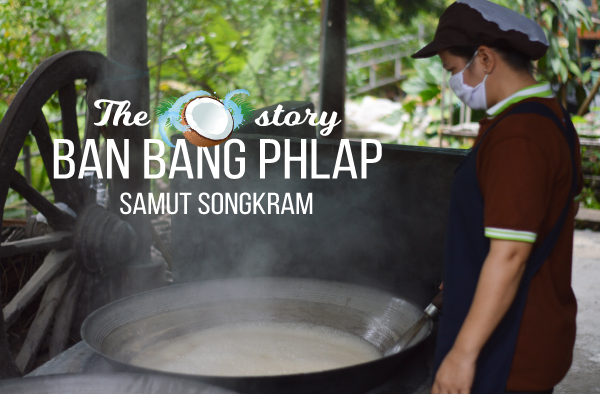
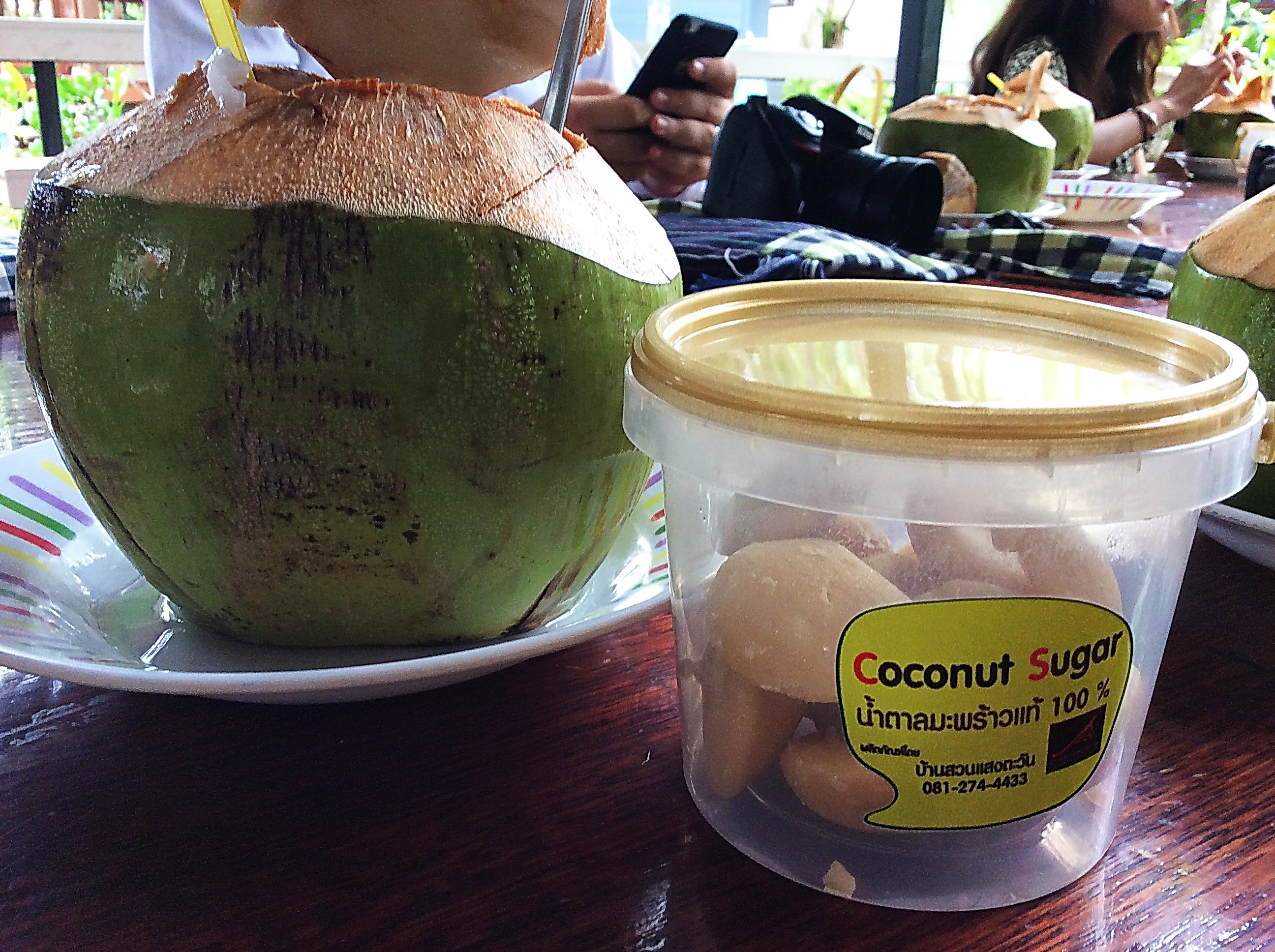
The essence of Thai cuisine comes from the care taken to produce the natural ingredients and Thai food is notable for its five balances of taste in sweet, sour, spicy, bitter and salty. One important ingredient is sugar, and the best sugar for Thai dishes is not processed white or brown sugar but coconut palm sugar.
Ban Bang Phlap in the province of Samut Songkram is just a mere few minutes drive from Ratchaburi and about an hour and a half from Bangkok city. Agriculture is the mainstay income of the people here and they have thrived as a community that has emulated the “self-sufficiency” philosophy of the late HM King Bhumibol Adulyadej. It is a simple way of life here and the villagers are engaged in mostly organic farming for crops such as fruit trees and coconut. Under the guidance of Khun Somsong Saengtawan, a local wise man, the community center is now an educational place for bio-fertilizer production, chemical free fruit and vegetable farming as well as agricultural production such as the famous palm sugar.
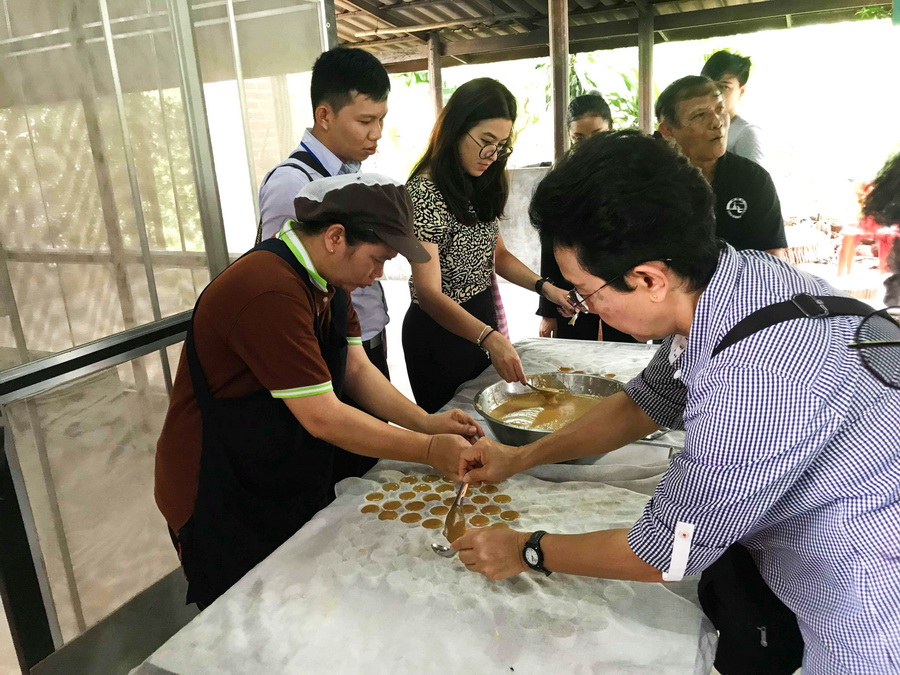
A trip to the Ban Bang Phlap Community Center is more than just a trip to watch sugar production. It is a chance to learn about the diversity of the Thai people in adapting to changes for best practices but also for the skill and dedication in their daily life to strive and be better. The coconut palm sugar produced at this center is of high grade quality and one of the best coconut palm sugars in the many provinces.
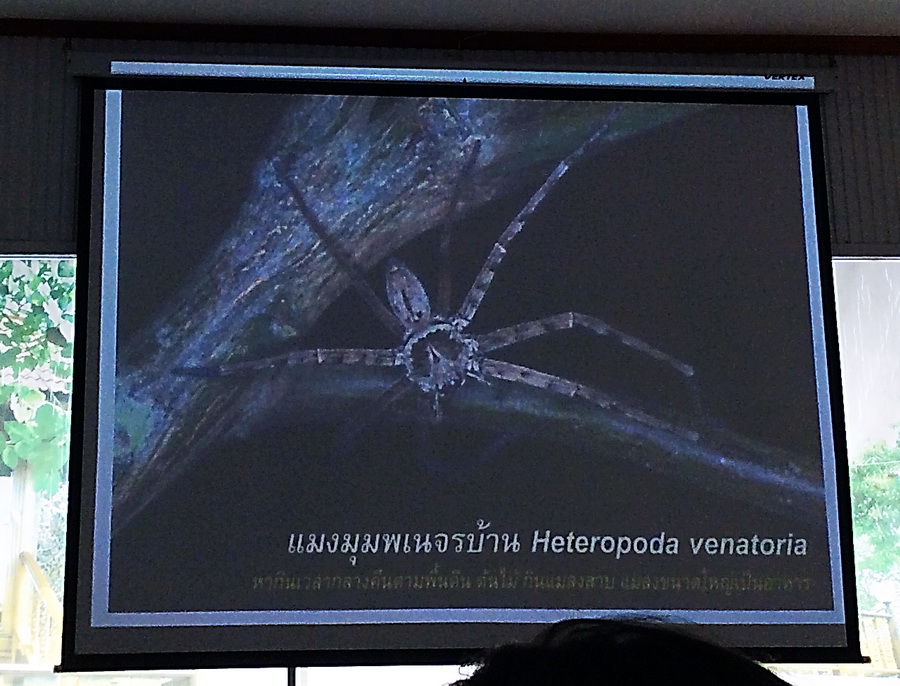
The center offers an insight into how young coconut plants are first cultivated from the original old brown coconuts. They are grown in natural chemical free plots before being transferred to bags as young saplings. When the saplings are matured enough, they are distributed to the various farms for planting and the pollination of the coconut flowers are dependent on the services of the breed of spiders and bees which are indigenous to the area.
A short walk to the coconut farm reveals a large plot of land grown with an assortment of young coconut trees and other fruit plants such as mangoes. The use of bees and insects to pollinate the flowers ensures that the products are free of harmful chemicals. The coconut plants that are ready for tapping of the sugar sap are approximately about 9 feet in height and most do not bear fruit.
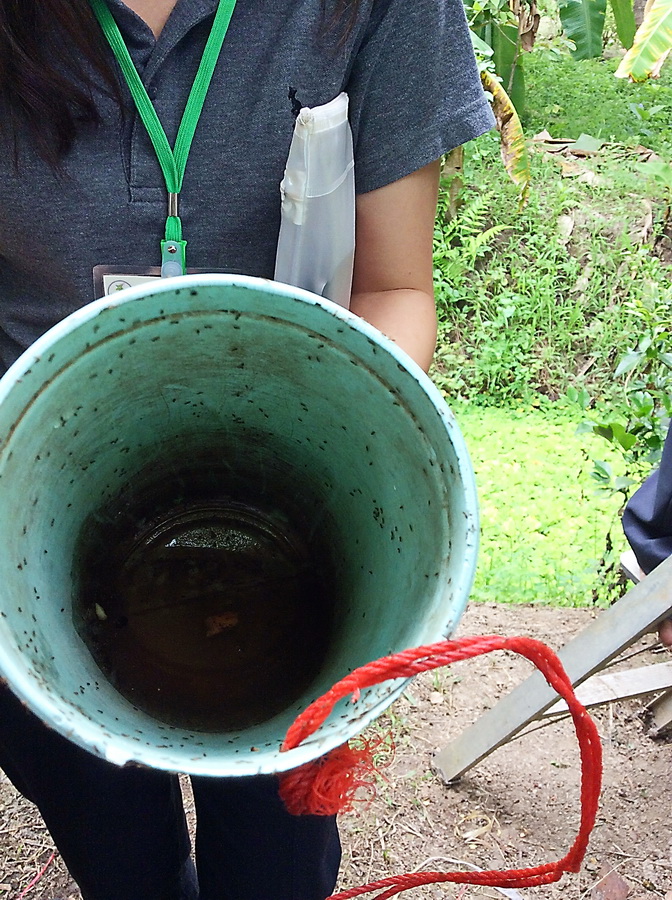
The sugar sap is tapped from the flower stalks which are specially cut and a plastic bottle is attached to the flower stem to gather the sap. The sap is then collected daily and brought to the center for processing.
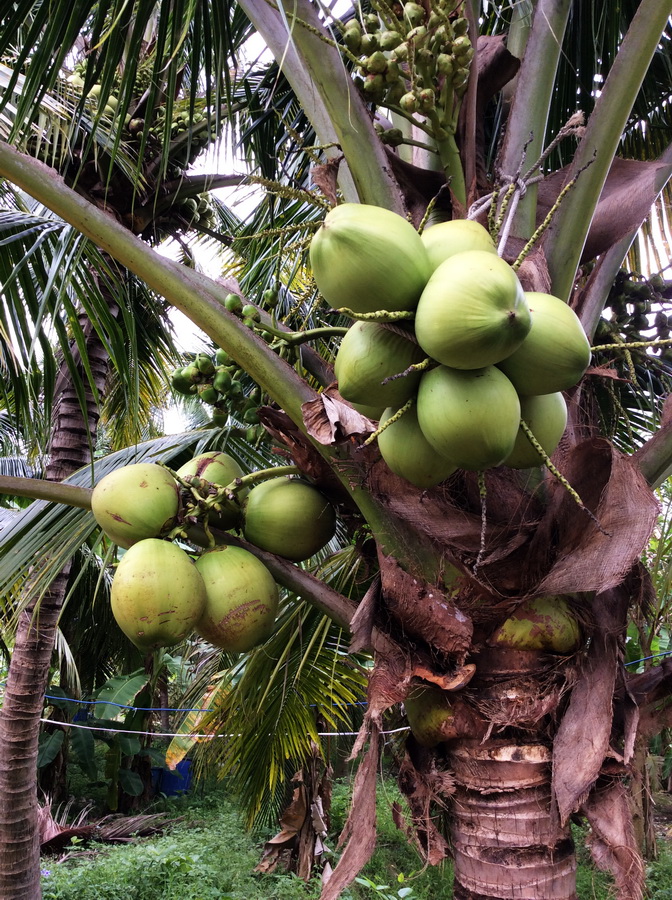
Older coconut trees are allowed to bear fruit producing the familiar green coconut that we often see used for drinks. These young coconuts are harvested, processed by cutting most of the tops off and sold as whole fruits to wholesale vendors as coconut for juice and meat. The older coconuts are left to brown and used as future young plants.
The opportunity to be out in a natural environment yields many sights not just about agriculture but also about the local flora and fauna most city folks will not get to see. Coming across a fairly large millipede is a rare sight indeed as these creatures are shy and can only thrive in a well-balanced natural environment.
Back at the center, a homemade concrete stove which can hold two large woks filled with raw palm sugar are being cooked over a roaring fire. Everything about the center is self-sufficient from the fuel used in the burning is derived from trimmed leaves and barks of the coconut plant and husks so nothing is gone to waste. The ashes are later recycled as natural fertilizer and mixed with soil to be reused. The boiling palm sugar must be constantly stirred for approximately 4 hours until it thickens.
The thickened palm sugar has the consistency of molasses and when it is semi-cooled, the liquid is poured into small molds which are lined with cotton muslin. The mixture is then left to cool completely before being removed from the molds and packed into containers. Another two varieties of the palm sugar is a large block that is left to cool and then crumbled into small pieces much like raw sugar while another is a semi-liquid molasses which is mostly used in the making of “somtum” – a young papaya salad and other delicious Thai salads.
It is notable to keep in mind that while the raw sap is tapped from the flowers, it must be kept from spoiling with a special herb mix that is placed into the container which is used to gather the sap. This prevents the sap from fermenting in the heat and keeping it fresh to be made into sugar.
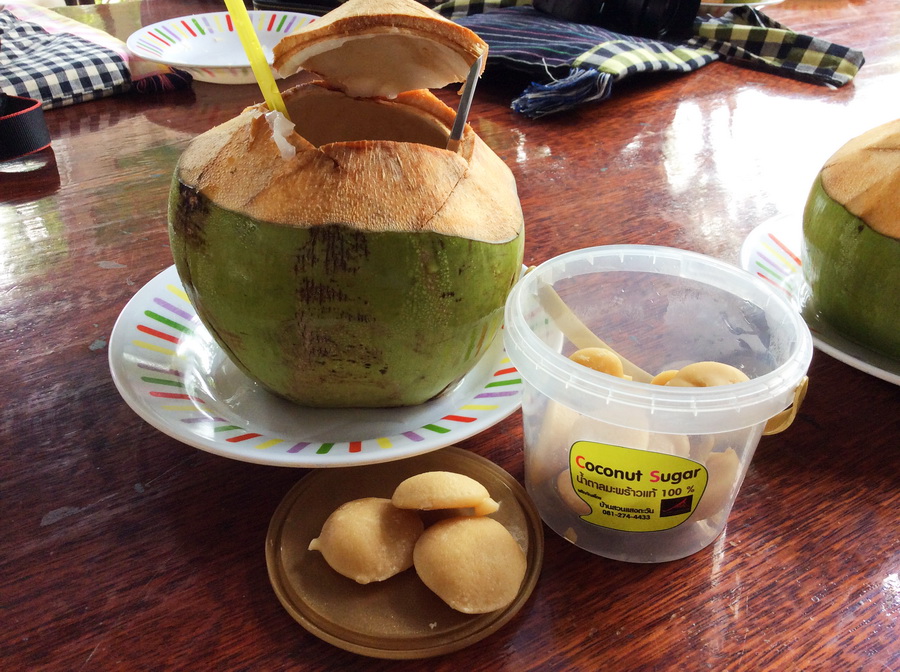
The end product of this long process is then market as processed coconut sugar which is fragrant and tasty on its own. The many uses of the versatile coconut tree is an amazing plant, providing sustenance in so many forms and one of Mother Nature’s life–giving plants. So the next time you are in Samut Songkram, be sure to drop in to the multi-award Ban Bang Phlup Community Center and pick up a bucket or two of this wonderfully aromatic coconut sugar for your cooking!
